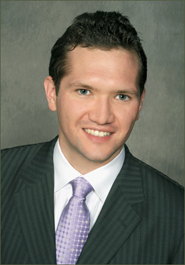NYSE Euronext has reworked the ‘kill switch’ technology used by its two options exchanges.
Following an incident in February on NYSE Amex Options where a market maker’s algorithm ran amuck, the exchange operator set out to narrow the constraints of its “Market Maker Risk Limitation Mechanism” and, at the same time, give dealers more control over their risk.
The intent is to prevent any sort of repeat of the episode involving market maker Ronin Capital, which inadvertently sent out 30,000 bad quotes.
“Since the incident in February, we did reduce the permissible maximum setting,” said Steve Crutchfield, NYSE Euronext’s head of U.S. options, about the changes made.

All options exchanges with market makers use kill switches similar to NYSE’s. The systems temporarily purge a market maker’s quotes in a given option from the montage if they are getting traded against more than the dealer likes.
The market maker itself sets thresholds for removing quotes, based on its tolerance for risk. After a purge, the market maker typically re-enters the market in less than a second with updated quotes.
Although options market makers are required to quote two-sided markets in most of their options for a good portion of the day, they only expect to enter into a certain number of trades within a given time frame, or to trade a certain number of contracts within a given time frame.
When the market moves in an unexpected way and they wind up doing more trades or contracts than expected, dealers want to temporarily exit the market to reprice their merchandise.
To make sure they get out in time, they partly rely on these exchange systems to monitor their trading activity and shut them down when their trading reaches preset levels.
NYSE originally launched its technology in 2009 in order to purge market maker quotes. The changes extend its use to non-market makers such as proprietary traders. It can now also be used by market makers for their orders.
Usage of the system is mandatory for market makers generating quotes, but voluntary for prop traders. The changes were completed this summer and rolled out last week.
In general, the changes to the mechanism give users more flexibility and control over how much risk they are willing to tolerate.
For instance, previously, the system only measured a dealer’s exposure by tracking trades. Now it also tracks the number of contracts traded and the percentage of a dealer’s quoted size that gets traded.
Market makers can adjust minimum and maximum parameters to suit their levels of risk tolerance.
In addition, the exchange operator reduced the time frame over which that exposure is measured on both NYSE Amex and NYSE Arca from one second to a tenth of a second.
Previously, the dealer could take himself out of the market after as few as five trades or as many as 100 trades in a second.
Now, a dealer can turn the lights off after as few as three trades or only as many as 20 trades, during that tenth of a second.
As a result, the maximum threshold was reduced from 100 trades to 20. This is intended to prevent a firm from setting the parameter too generously.
“That allows our participants to be more selective,” Crutchfield said. “You can imagine that a market maker who is used to trading pretty rapidly might be perfectly fine making 20 trades in a second, but if they make 20 trades within 100 milliseconds, that might be more of a concern. So this allows them to tailor those settings more precisely to situations more likely to be risky for them.”
Crutchfield adds that the changes have increased market maker confidence, and that some have informed him they are increasing the size of their quotes by 30 percent.



